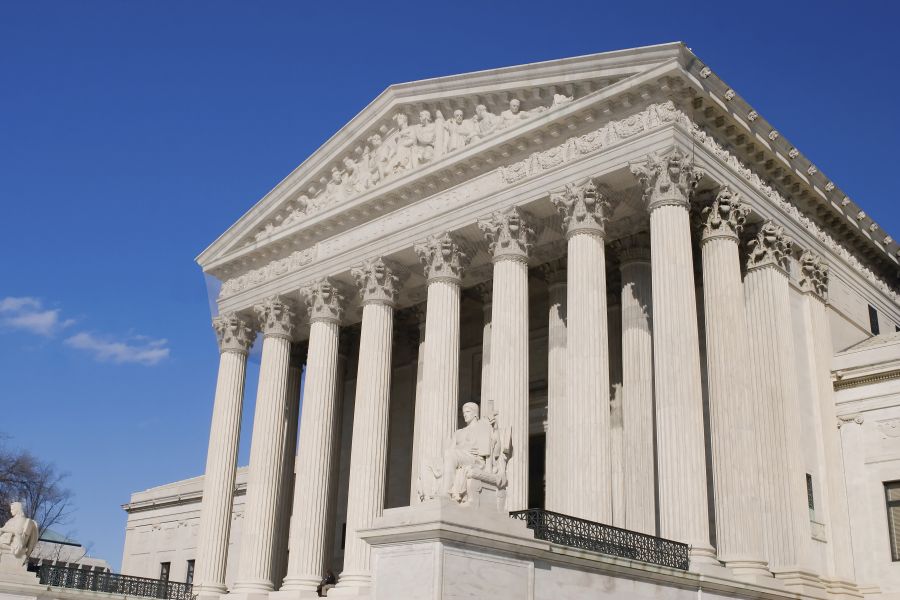PERSPECTIVE: Can the First Amendment protect educators from being fired for teaching about race?
First Five by the Freedom Forum Institute
Aug 19, 2021
TONY MAURO
Download Word doc here.
Officials in more than 25 states have in the past year introduced or enacted measures to penalize the teaching of racial issues in ways that might be divisive in public schools.
The trend has targeted the teaching of “Critical Race Theory,” a decades-old academic field that explores the impact of racism and inequality on America and its legal system. The teaching materials included with “The 1619 Project,” a New York Times series that traced the history of slavery in America, also fueled controversy over banning content from education and First Amendment freedoms.
But many of the state laws have swept even more broadly:
- A Tennessee law passed in May bans teaching "prohibited concepts" such as the idea that "a meritocracy is inherently racist or sexist" or that "The rule of law does not exist, but instead is a series of power relationships and struggles among racial or other groups." Violations could result in fines, proposed by the state Department of Education, of $1 million or more.
- An Arizona law passed in July bars teachers from any instruction that “presents any form of blame or judgment on the basis of race, ethnicity or sex.”
- An Oklahoma law bars teachers from including in their curriculum the notion that “an individual, by virtue of his or her race or sex, bears responsibility for actions committed in the past by other members of the same race or sex.”
- A Georgia resolution states that no state school district should “compel” educators to “discuss current events or widely debated and currently controversial issues.”
Those and other broadly framed laws have worried school teachers who fear they could be disciplined or fired for teaching material that used to be common and innocuous.
“This would make me hesitate now” on some lessons about race, August Plock, a Texas high school teacher told Education Week. “It potentially puts a chill over teachers.”
John Rumel, a former general counsel of the Idaho Education Association, also told the publication, “If I’m a K-12 teacher, I’m not sure what I can do. Can I mention there is a rubric known as ‘critical race theory’ that exists? I’m not espousing it. This measure would give me pause as a teacher and might chill my speech.”
Those comments raise important questions: Isn’t the First Amendment supposed to prohibit government from making laws that chill the freedom of speech? Is anyone challenging these laws on First Amendment grounds?
Not yet, according to Frank LoMonte, director of the Brechner Center for Freedom of Information at the University of Florida and former executive director of the Student Press Law Center.
“Anyone punished by a school district for nonthreatening speech seems to have the makings of a First Amendment case,” said LoMonte. “But from years of teaching and researching First Amendment case law, I know that this is where things get complicated.”
Here’s the reason: The U.S. Supreme Court in 2006 issued a decision titled Garcetti v. Ceballos, ruling that government employees — including public school teachers — do not have First Amendment protection for speech they deliver as part of their official duties.
A DUE PROCESS ISSUE?
Teacher unions have pledged to fight in court to protect teachers from being punished for doing their jobs. But LoMonte believes that because of the Garcetti decision, any lawsuits challenging the wave of legislation won’t be based on the First Amendment’s free speech clause. “Teaching is an official work assignment,” he said. “So the First Amendment seems unlikely to rescue a teacher fired for teaching a forbidden subject.”
Instead, other arguments may save the day for teachers. One is the 14th Amendment’s “due process” clause, which frowns on vague or arbitrary actions by government. The vagueness of some of the new laws makes it difficult for educators to know what they can or cannot teach.
Another angle: the laws attacking the teaching of Critical Race Theory material exclusively could be in trouble because those materials are used by colleges and universities, not K-12 schools. Universities are often protected by court rulings favoring academic freedom.
STUDENTS’ RIGHTS MAY BE THE KEY
Students, though, could challenge these broader laws by arguing they have a First Amendment right to take in lessons and information from schools. In a 2010 case, a federal appeals court struck down an Arizona law banning “ethnic studies” in schools. The ruling stated, “Students have a First Amendment right to receive information and ideas … a right that applies in the context of school curriculum design.”
That strategy underscores a curious truth: that students in some ways have more First Amendment protection than teachers do. The 1969 Supreme Court ruling in Tinker v. Des Moines Independent Community School District declared that neither “students (n)or teachers shed their constitutional rights to freedom of speech or expression at the schoolhouse gate.”
But the Garcetti ruling changed all that, says LoMonte. “If a teacher and a student were wearing the identical political campaign T-shirt in the school,” he said, “and the principal tells them both to change their shirts, the teacher has to do it, and the student doesn't.”
Nonetheless, LoMonte believes that lawyers will go to court soon to halt the wave of measures aimed at teachers who want to explain race to their students. “Surely,” he said, “somebody is out there drafting a complaint right now, whether it's a teacher’s union or the ACLU (American Civil Liberties Union)."
Tony Mauro is a special correspondent for the Freedom Forum.










